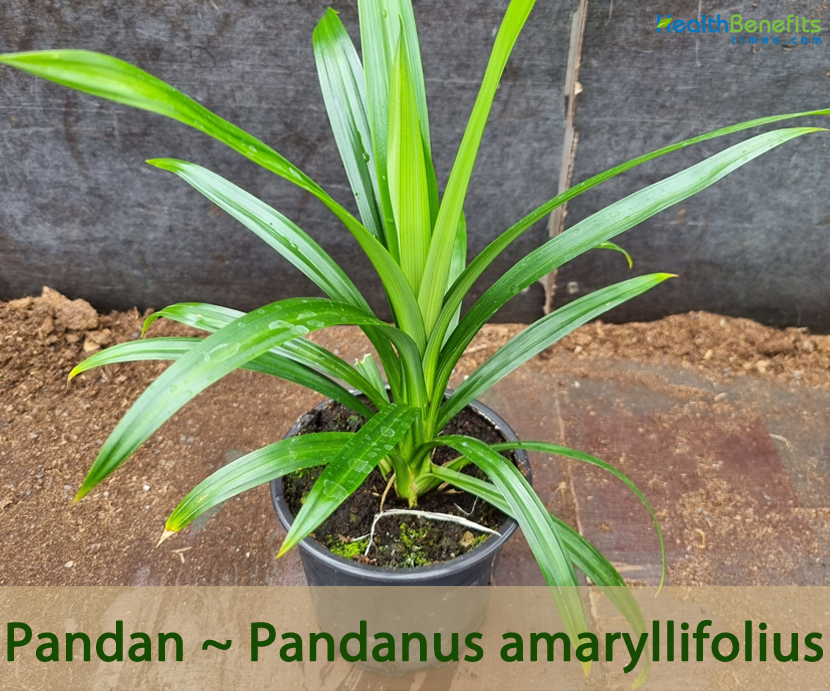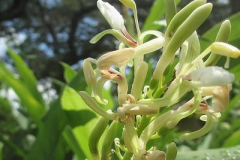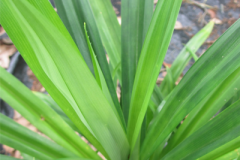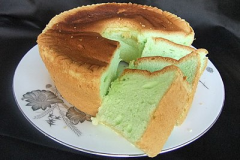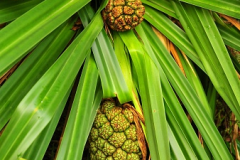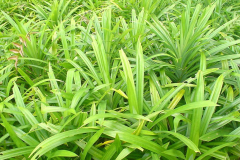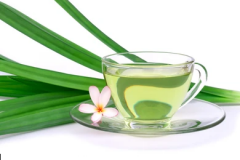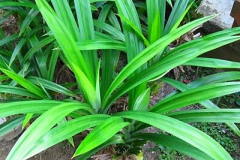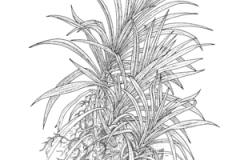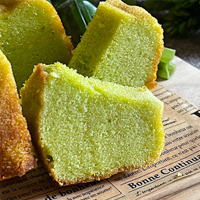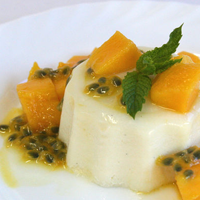The genus name “Pandanus” is derived from the Indonesian name of the tree, pandan. The species epithet “amaryllifolius” refers to how its leaves are similar to those of plants in the Amaryllis genus. It is derived from the Latin words “amaryllis” and “folius” meaning leaves. Pandanus is a genus of monocots of about 600 known species, varying in size from small shrubs less than a meter to medium-sized trees of about 20 meters. In the Philippines there are 48 species of Pandanus many of them are endemic, growing in various habitats. The fruit of some species are edible, eaten by bats, rats, crabs, elephants and lizards. The majority of species are dispersed primarily by water. The plant is cultivated for its leaves in gardens in West Indonesia, Malaysia, Thailand, New Guinea, Sri Lanka, the Philippines, recently also in Hawaii. It is also grown as an ornamental plant. It has fragrant leaves which are used widely for flavoring in the cuisines of Southeast Asia and South Asia.
Pandan Facts
| Pandan Quick Facts | |
|---|---|
| Name: | Pandan |
| Scientific Name: | Pandanus amaryllifolius |
| Origin | Originate from the Moluccas (Indonesia) |
| Colors | Reddish-brown |
| Shapes | Fruit of the pandan plant is about 1 to 2 inches in diameter |
| Taste | Sweet and mild vanilla-like flavor with a subtle undertone of rose and almond |
| Health benefits | Prevents Dandruff, Arthritis and Joint Pain Relief, Helps to Boost Immunity, Reduce Your Risk of Cancer, Blacken Hair, Good for Weak Nerves, Heart Disease Prevention, Effective for Headaches and Earaches, Improves Oral Health, Skin Care, Remedy for Pains and Cramps, Alleviates Gout, Eliminate Tinea Versicolor, Boosts and Increases Appetite, Enhances body stamina, Helps to Overcome Impotence, Treats High BP, Suppresses Anxiety and Stress |
| Name | Pandan |
|---|---|
| Scientific Name | Pandanus amaryllifolius |
| Native | Originate from the Moluccas (Indonesia). It is widespread in Sri Lanka, Thailand, Vietnam, Malaysia, Indonesia (including Irian Jaya), and the Philippines, and is probably cultivated in many other countries, having been brought in by South-East Asian migrants |
| Common Names | Fragrant Pandan, Fragrant screw pine, Pandanus amaryllifolius, Bai toey hom, Bai toey, Ban lan ye, Boro, Curry leaf, Daun pandan, Hedan, La dua, Pandan bau, Pandan rampai, Pandan wangi, Pandan, Pandano, Pandanus leaf, Raampa, Raampe faiy, Rampe, Taey, Toei hom, Basmati Plant, Pandan Plant, Rambha Plant, Biryani leaves Plant, Indonesian screwpine, Scented pandan, Umbrella tree, screw tree, pandan |
| Name in Other Languages | Assamese: Jahapat Cambodia: Taëy Chinese: Qi ye lan (七葉蘭) Danish: Skruepalme, Pandan, Schroefpalm Divehi: Raan’baafaiy (ރާނބާފަތް) Dutch: Pandan, Schroefpalm English: Fragrant pandan, Fragrant screwpine, Indonesian screwpine, Scented pandan, Umbrella tree, screw tree, pandan Esperanto: Pandano Estonian: Lõhnav Pandan Finnish: Kairapalmu, Maustekairapalmu French: Pandanus German: Schraubenbaum, Schraubenpalme Hebrew: Ha-pandanus Hindi: Rampe (रंपे), Kenr, Ambemohor Pat Hungarian: Csavarpálma Levél, Pandanusz Levél, Panpung Levél Indonesian: Pandan rampeh, Pandan wangi, pandan rampe, pondak Italian: Pandano Japanese: Nioi tako no ki (ニオイタコノキ) Javanese: Pandhan wangi Khmer: Taey Korean: Pandanasu (판다누스), pandan (판단) Laos: Të:y ho:m, të:y ba:nz Lithuanian: Amarilinis Pandanas Malay: Pandan jelingkeh, Pandan bau, Pandan rampeh, Pandan rampai Pandan wangi , Pokok Pandan Malayalam: Biriyāṇikkaita (ബിരിയാണിക്കൈത) Malaysia: Pandan wangi Marathi: Ambemohor pat, Annapūrṇā gavata (अन्नपूर्णा गवत) Norwegian: Skrupalme Papua New Guinea: Karuka Persian: پاندانوس آماریلیفولیوس Philippines: Pandan, pandan mabango Polish: Pochutnik amarylkolistny Portuguese: Pandano Sinhala: Rampe (රම්පේ), Rampa (රම්පා), Rampeh, Rampe Spanish: Pandan, Pandano Sundanese: Pandan wangi Swedish: Kryddskruvpalm, Skruvpalm Tagalog: Pandan Tamil: Rampa (ரம்பா) Thai: Bai toey, Bai toey hom, Tey h̄xm (เตยหอม), Toeihom, panae-wo-nging, Bi Tey (ใบเตย), Tey h̄xm (เตยหอม), Tey (เตย) Vietnamese: Cây cơm nếp, Dứa thơm, Lá dứa |
| Plant Growth Habit | Tropical evergreen tree |
| Growing Climates | Grows best in tropical to subtropical climates, sandy beaches, mangroves and primary forests. It prefers sheltered locations and does not tolerate exposure to direct sunlight or strong winds. The plant is also susceptible to frost damage |
| Plant Size | 1.6 m- 4.5 m tall |
| Stem | Slender, 1-1.6 m tall, 2-5 cm in diameter, decumbent and ascending, emitting aerial roots throughout its length |
| Leaf | Simple, alternate, and spirally arranged. They are oblong-lanceolate to narrowly elliptical in shape with serrated margins. They are 25-75 cm long and 2-5 cm wide. The leaf surface is glossy green and the undersides are pale green. The leaf stalks are short and stout, about 1 to 2 inches in length. |
| Flower | Female inflorescence has not been observed, while the male inflorescence is very rare and only found on the tree form of this species. Male inflorescence (evidently exceedingly rare), probably pendent, up to 60 cm long, the spathes 90 cm long, white or the lower ones with green foliaceous tips, bearing several oblong spikes to 35 cm long or more, several cm wide. |
| Fruit Shape & Size | Fruit of the pandan plant is reddish-brown and they grow to about 1 to 2 inches in diameter. The fruit looks more like a cone than a traditional fruit, and it can be eaten raw or made into marmalade |
| Fruit Color | Reddish-brown |
| Flavor/Aroma | Somewhat nutty, reminiscent to fresh hay and definitely pleasant (Leaves) |
| Taste | Sweet and mild vanilla-like flavor with a subtle undertone of rose and almond |
| Plant Parts Used | Leaves, Anthers, tops, seeds |
| Propagation | By suckers or by stem cuttings |
| Lifespan | Over 50 years, with some individuals surviving for a century or more |
| Health Benefits |
|
Plant Description
Pandan is a tropical upright, evergreen tree that normally grows about 1.6 m- 4.5 m tall. Pandans are moderately fast growers during the summer, but during the winter (especially if you’re in a temperate area) their growth will slow significantly. The plant has two distinct growth forms: – A small growth form that grows from sucker shoots with slender stems 1 – 1.6 meters tall and 2 – 5 cm in diameter. Flowers and fruits are unknown. Large growth form eventually produces an erect stem, 2 – 4.5 meters tall and 15 cm in diameter. The female inflorescence is unknown, but on exceedingly rare occasions it produces a male inflorescence. The plant is found growing in tropical to subtropical climates, sandy beaches, mangroves and primary forests. It prefers sheltered locations and does not tolerate exposure to direct sunlight or strong winds. The plant is also susceptible to frost damage.
Stem
Stem is slender, 1-1.6 m tall, 2-5 cm in diameter, decumbent and ascending, emitting aerial roots throughout its length.
Leaves
Leaves are simple, alternate, and spirally arranged. They are oblong-lanceolate to narrowly elliptical in shape with serrated margins. Shrub leaves are 2-5 cm wide and 25-75 cm long. Leaves of the tree form are the same shape, but about twice the size (7-9 cm wide, 150-220 cm long). The leaf surface is glossy green and the undersides are pale green. The leaf stalks are short and stout, about 1 to 2 inches in length.
Pandan leaves resemble the top of a pineapple plant. Pandan leaves have a unique and distinct grassy aroma when first crushed that mellows out to a subtle, herbal, and floral aroma. When cooked, Pandan leaves have a nutty, almond, rose-like, and slightly sweet flavor. The leaves of the plants are widely used in flavoring food. In India, the leaf pieces are added to cooking rice, which gives it a basmati smell. The characteristic aroma of pandan is caused by the aroma compound 2-acetyl-1-pyrroline, found in the lower epidermal papillae; the compound gives white bread, jasmine rice, and basmati rice.
Flowers
The female inflorescence has not been observed, while the male inflorescence is very rare and only found on the tree form of this species. Male inflorescence (evidently exceedingly rare), probably pendent, up to 60 cm long, the spathes 90 cm long, white or the lower ones with green foliaceous tips, bearing several oblong spikes to 35 cm long or more, several cm wide. Upper ones are much shorter, about 9-10 cm long, 2 cm wide, composed of many crowded staminal phalanges; staminal phalange with column 4-9 mm long and 1.5-2.5 mm wide, compressed to flat, containing 3-6 stamens with very short filaments, 0.5-1.5 mm long and 0.4-0.6 mm wide and oblong anthers, 2.5 mm long.
Fruits
The fruit of the pandan plant is reddish-brown and they grow to about 1 to 2 inches in diameter. The fruit looks more like a cone than a traditional fruit, and it can be eaten raw or made into marmalade.
Health benefits of Pandan
Preliminary research into pandan has recognized a number of important vitamins, minerals, and antioxidants known to support health. For instance, pandan is a rich source of vitamin A, an essential compound for eye health that may even help to prevent cancer. Although more research is needed, many potential health benefits of pandan have already been found, such as:
1. Detoxify body
Adding pandan leaves to your diet helps your liver with its detoxifying function. It helps discharge toxins and unhealthy substances from your liver and body. Since it is a mild laxative, it eases the process of waste excretion.
2. Prevents Dandruff
Pandan is a natural remedy to solve the dandruff dilemma. Mash or blend 10 fresh leaves until smooth, and mix with 100 ml of water. Apply the mixture on your scalp, wrap with a towel and leave for 30 minutes. Then, rinse with water or shampoo.
3. Arthritis and Joint Pain Relief
Traditional medicine prizes pandan for its role in pain relief, particularly arthritis and joint pain. Researchers have found that oils made from pandan extract are rich in phytochemicals known to relieve symptoms of arthritis. As an added benefit, they can also help ease headaches and earaches. (1), (2)
4. Helps to Boost Immunity
Immune system plays a vital role in maintaining the health of our body significantly. Pandan leaves have essential vitamins and antioxidants such as beta-carotene and Vitamin C, preventing chronic health conditions by boosting your immune system. (3)
5. Reduce Your Risk of Cancer
Pandan leaves, or screwpine leaves, have powerful antioxidants that help prevent the onset of cancer by fighting off harmful toxins. Additionally, the apoptotic, cytotoxic, antimitotic, and anti-proliferative effects of pandan leaves and root extracts can significantly reduce cancer risk.(4)
6. Blacken Hair
Do you want to make your black hair look darken? Pandan leaves can be used to blacken our hair. Chop about 7 pieces of pandan leaves and boiled with water. Let the water condense all night. If you have noni fruit you can mix it with the pandan water in the morning and massage to your scalp. Do it regularly to have better effect.
7. Good for Weak Nerves
Pandan leaves are known for being very beneficial when it comes to our nerves system health. Weak nerves could lead to people getting occasional cramps. Weak nerves are usually caused by the reduction of nerve stimulation to certain and specific body parts that have been previously receiving that stimulation per usual. Pandan leaves will also help to promote the health of the system of nerves in our bodies. Take three pandan leaves and chop them into small pieces, boil it with about three glasses of water. Let it all boil in the water until there is only about 2 glasses worth of water remaining. You can then strain the concoction in order to separate the water with the pandan residue, and you may drink one glass in the morning and one glass in the evening.
8. Heart Disease Prevention
Pandan leaves are an excellent source of carotenoids- a class of antioxidants that play an essential role in the healthy maintenance of your heart. In addition, the pandan leaves benefits include reducing the risk of Atherosclerosis (Atherosclerosis is a condition that results in the narrowing of the heart’s arteries due to the buildup of plaque).
9. Effective for Headaches and Earaches
Pandan tea helps relieve headaches effectively by giving your body a calming effect. In addition, the high amounts of phytochemicals present in pandan extract are said to ease earaches and headaches significantly. Thus, Pandan leaves or paste can be an excellent alternative to chemical drugs to relieve earaches or headaches.
10. Improves Oral Health
Pandan leaves have a pleasant aroma that helps freshen your breath when you chew on them. These leaves are also used to stop bleeding gums in some non-western medicinal practices. However, there is a need for formal studies to prove this effect because all these oral health benefits are mainly anecdotal.
11. Skin Care
In Southeast Asia, the dried, crushed leaves of pandan are often used as a topical treatment for minor burns, sunburn, and other skin problems. Although research is needed, initial research shows that the tannic acids in pandan provide fast cooling action for minor burns.
12. Remedy for Pains and Cramps
Pandan leaves are an excellent remedy for pains and cramps and can be applied by preparing a liniment and rubbed into the affected area. This is also good for treating pains for arthritis.
13. Alleviates Gout
Pandan leaf tea is known to reduce uric acid levels in the body and can help to alleviate the symptoms of gout. Drinking this home-brewed tea regularly can also help to remove kidney stones from the body.
14. Eliminate Tinea Versicolor
Fungus in your skin can cause tinea versicolor. It can make your skin look awful beside make you want to scratch over and over. For some people who have skin fungus problem pandan leaf can help get rid of it. Just make some extract juice of pandan leaves then mix it to a cup of salt water to consume one cup a day. Do it for at least 3 day to have the best effect.
15. Boosts and Increases Appetite
For those who experience weak appetites, especially if having just recovered from an illness or have an aversion to food, pandan leaf can help to restore and boost your appetite. Drink pandan leaf tea in the morning and evening to shake off the loss in appetite.
16. Enhances body stamina
To enhance your body stamina, boil five pandan leaves with 3 glasses of water, remove the leaves after boiling and allow the concoction to stand until cool. Add some lemon drops to the water and drink every 2 days. You can also get this benefit by drinking the pandan leaf tea.
17. Helps to Overcome Impotence
Pandan leaf is also a natural remedy that can help men to overcome impotence when taken regularly. To do so, wash 3 pieces of pandan leaves and cut them into small pieces. Boil the leaves in 4 cups of water until the volume of water is halved i.e. about 2 cups. Drink this fluid twice a day – one cup each time in the morning and evening.
18. Treats High BP
Pandan leaves consist of ample amounts of potassium that regulates electrolyte balance in the body and efficiently brings down elevated blood pressure levels to the normal, healthy range. Imbued with numerous polyphenol antioxidants, pandan leaves have powerful antihypertensive properties, to mend instances of hypertension. Steep a few pandan leaves in boiling water add some honey and lemongrass and consume this pandan tea once daily to keep blood pressure under control and augment heart wellness.
19. Suppresses Anxiety and Stress
To suppress anxiety, wash 2 pieces of pandan leaves and slice it thinly. Brew the leaves in a glass of boiling water. Once cool, strain the water and drink the fluid immediately. Take this 2 to 3 times a day until you feel better.
20. Enhances Respiratory Functions
Blessed with expectorant traits, pandan leaves work wonders in ridding the nasal, lung passages of phlegm and other unwanted secretions, to instantly remedy cold, heal fevers and improve respiratory health, as well as lung and breathing functions. They also contain antipyretic and antiviral properties, to cure fevers, seasonal allergies and boost immunity. Add pandan leaf powder or paste to routine meals and consume daily, for treating fevers, cough and cold.
21. Manages Diabetes Symptoms
Abounding in glycosides, pandan leaves positively influence glucose metabolism and insulin functions in the body, thus avoiding sudden spikes in blood sugar levels post meals and keeping diabetes symptoms in check. Mix 2 tsp of pandan leaf powder to a glass of boiling water and drink this potion once daily, for significant relief from raised blood sugar levels and helping manage diabetes.
22. Helps Relieve Rheumatism
Rheumatism causes inflammation, swelling, and pain on the affected muscle or joints. To feel relief from its symptoms, drinking pandan tea is recommended.
Simply take 3 pieces of clean pandan leaves and cut into pieces. Brewed with half a cup of coconut oil that has been boiled and stir it until evenly distributed. Once cool, it can be used as a liniment to massage the affected area.
23. Cures Itchy Scalp
Loaded with antifungal characteristics, pandan leaves are highly efficient in warding off dandruff and other infections on the scalp, thus soothing the hair and lessening itching sensation on the scalp.
Mash 10 – 12 fresh pandan leaves into a thick paste, mix with ½ cup of lukewarm water and apply an even layer on the scalp. Wrap it with a towel and let it stay for 30 minutes. Then rinse off with water, for strong, silky, thick hair sans dandruff and scalp irritation.
24. Helps Treat Insomnia
Pandan leaves consist of alkaloid compounds that can provide a calming effect on the body and make you sleep easier. Brew pandan leaves with hot water, then put one teaspoon of honey. Drink while still warm.
25. Relieves Headache
As mentioned, pandan leaf extract has a calming effect on the human body, and is a suitable remedy to relieve headaches.
26. Relieves Joint Pain
Pandan leaves are a natural source of potent anti-inflammatory agents, that when applied topically on aching bones, muscles, joints, miraculously heal all forms of cramps, swelling and improve the mobility and flexibility of connective tissues. Massaging the oil extracted from pandan leaves onto painful areas on joints, muscles vastly reduces aching, swelling in arthritis, gout and promotes bone strength and health.
27. Helps Prevent Hair Loss
Hair loss can be caused by various factors, such as malnutrition, stress, dramatic weight loss, drug side effects, and other health-related problem. Pandan leaves can help fight hair loss. Simply have the following washed and cleaned: 1 pandan leaves, 5 plum aralia leaves, 10 jasmine flowers, 10 leaves of hibiscus leaves, 1 handful of false daisy leaves, and 1 rose petal. Put them all in a pot of aluminum and add a half cup of hazelnut oil, coconut oil, and sesame oil. Boil the mixture until it boils down and then filter it. Apply the concoction every night into the hair and scalp and wrap with a warm towel. The next day, simply rinse it with cold water and shampoo as usual. Do this 2-3 times a week for best results.
28. Prevents Constipation
Consuming pandan leaf tea daily can help one to prevent and overcome constipation.
29. Treat Dental Gum Pains
We have not tried this, but were told that pandan leaves can be chewed dry to treat gum pains.
30. Heals Sunburns
If you ever have sunburns, take a bath using pandan tea or just take a bath using boiled water with pandan leaves. This should help relieve some sunburn pain and make it heal faster.
Traditional uses and benefits of Pandan
- An infusion is used as a sedative against restlessness and is also a traditional treatment for diabetes.
- Externally, the leaves are used in the treatment of skin diseases; as a relaxing soak to counter restlessness.
- Infusions of the leaves are used internally and externally as a sedative against restlessness.
- It is also used in some traditional medicine such as remedy for toothache and for decreasing glucose concentration or hypoglycemic effect.
- The roots extract are used to cure thyroid problems.
- It is also used for preparing lotion along with ash and vinegar to treat measles, as purgative, in the treatment of leprosy, sore throat and as diuretic in Philippines.
- The Taiwanese always use this plant to treat fever.
- Tender shoots are directly eaten in the case of severe jaundice.
- Powder made from interior of anthers, smoked for sore throat.
- Roots, brayed in milk are used internally for sterility and threatened abortion.
- It is used for small pox and leprosy.
- Ashes of wood are used for wound healing.
- Seed concoctions are used to strengthen the heart and liver.
- Oil is used as stimulant and antispasmodic and used for headaches and rheumatism.
- In India, oil is used as remedy for earache.
- In Malaysia, it is said to be a cure for measles, gonorrhea, syphilis, dengue, and anemia.
- Powder made from anthers and tops of bracts used for epilepsy.
- Leaves are soaked in coconut oil for several days and the oil is then used for rheumatic problems.
- Traditionally a mixture of Henna, Limau purut, coconut milk, milk and Pandan leaf are used to clean hair and to provide fragrance.
Culinary Uses
- The fragrant young leaves are cooked and eaten.
- They are often used, both fresh or dried, to flavor rice, cassava etc., especially in sweet dishes.
- Juice extracted from leaves is used to add fragrance to various types of teas and desserts.
- Desserts include cakes and kueh.
- The aromatic leaves give a garlic-like flavor to food.
- The chlorophyll pigments in the leaves will color foods green.
- Leaves are also used to wrap other foods, such as rice dumplings.
- Leaves are not consumed but are removed from the dish before serving.
- In Indonesia, rice is sometimes steamed in baskets made of the leaves.
- Thai people wrap the leaves around pieces of seasoned chicken and then fry them.
- In Southeast Asia, the leaves are often used to make small boxes or containers that can hold pudding or jellies.
- Seed often has a delicious nutty flavor when eaten raw or cooked, though it is tricky to extract.
- Inner base of young leaves can be consumed raw.
- Throughout South-East Asia, they are used fresh in cooking to impart flavor and color to rice, sweets, jellies and many other food products.
- Leaves are widely used to flavor ordinary rice, as a substitute for expensive aromatic rice cultivars.
- Juice is pressed from the leaves for flavoring and coloring cakes.
- Freshly chopped leaves are mixed with the petals of various flowers to make potpourris.
- In the Philippines, leaves are popularly used in the cooking of rice, imparting a pleasant fragrance and flavor.
- Leaves are also used to flavor ice cream and sherbets
- Dried leaves powder have been widely used in ice cream, yogurt, soup, cake, tea, a type of Malaysian traditional pandan-flavored rice, and even Malaysian traditional coconut jam called “Kaya”.
- The leaves are also used to flavor pastries, jellies, and drinks.
- Leaves are used to flavor pastries, jellies, and drink.
- Leaves are added to iced drinks prepared from the coconut milk and sweet puddings and custard prepared from sticky, glutinous rice with palm sugar.
- The leaves are added to iced drinks prepared from the coconut milk and sweet puddings and custard prepared from sticky, glutinous rice with palmar.
Recipes
Pandan Coconut Butter Cake
Ingredients for Pandan Extract:
- 50 to 75 grams of fresh or frozen pandan leaves.
- 100 ml of water.
Ingredients for Cake:
- Five egg whites
- ½ cup of sugar
- One tbsp. of vinegar
- Five egg yolks
- ½ cup of sugar
- Two sticks of unsalted butter
- 250 grams of cake flour
- ½ cup of coconut cream
- One ¼ tbsp. of baking powder
- 1 tbsp. of salt.
Preparation of Pandan Extract:
- Cut the leaves into thin strips using sharp scissors.
- Place the water and pandan leaves in a blender and pulverize them until they become puree.
- Squeeze and strain the pandan extract into a small bowl.
Preparation of cake:
- Preheat the oven to 160 Celsius.
- Take an 8″x8″ square pan, grease it, and keep it aside.
- Meringue: In low-speed whisk egg whited until they turn foamy. Whisk until the mixture turns pale with tiny bubbles after adding the vinegar. Continue whisking while adding 100 grams of sugar by increasing the speed until a stiff peak. Not set it aside.
- Egg Yolk Batter: Beat the sugar and egg yolk until the mixture turns thick and pale. Add pandan extract, coconut cream, melted butter, and beat to mix. Beating at low speed, combine the cake flour, baking powder, and salt.
- Now use a spatula to fold the meringue into the egg yolk batter in three batches.
- Now pour the batter into the greased cake pan.
- Place the pan in the preheated oven for about 1 hour 30 minutes or until the top is golden brown and the cake is cooked thoroughly.
- Once done, let the cake cool down completely, slice, and serve
Pandan Panna Cotta with Mango and Passion fruit
Ingredients:
- 4 tsp gelatin powder
- 250 ml milk
- 100 ml coconut cream
- 70 gm. caster sugar
- 2 stalks pandan leaves, tied in a knot
- 300 ml pouring cream
Mango & passion fruit:
- 2 mangoes, cut into cubes
- 6 passion fruit pulps
- Mint leaves, to garnish
Directions
- Put 3 tablespoons of water in a bowl. Sprinkle gelatin powder evenly over. Leave the gelatin to sponge and swell.
- Add the milk, coconut cream, sugar and pandan leaves in a small saucepan. Heat over low heat and simmer for 10 minutes to infuse the flavors. Be sure not to boil the milk. Remove from the heat and leave to infuse for another 10 minutes. Discard the pandan leaves.
- Add in the sponged liquid to the warm milk and stir until completely dissolved. Strain the milk into a bowl through a fine sieve and chill in fridge until half set.
- Whip the cream until soft peaks form. No need to beat too long. Gently fold the whipped cream into the milk mixture and pour into six jelly/custard molds. Refrigerate until completely set.
- Combine the mangoes and passion fruit and mix well.
- To serve, briefly dip the base of the molds into hot water, and then turn the panna cotta out onto individual serving plates. Drizzle with mango and passion fruit and garnish with a mint leaf.
Buko Pandan
Ingredients
- Five ounces of condensed milk.
- 1 ½ cup of young strips of coconut.
- Three ounces of powdered gelatin.
- Eight ounces of all-purpose cream or table cream.
- One ¼ cup of water.
- Six drops of buko pandan flavoring.
- ½ cup of cooked sago pearls.
- Two scoops of vanilla ice cream.
Directions
- Place the gelatin powder and water in a bowl and combine them using a spoon.
- Now add the buko pandan flavoring to the mixture and combine them thoroughly.
- Pour in the mixture after heating the saucepan. Stir continuously while bringing the pan to a boil.
- Transfer the mixture to a mold after turning off the heat and let it cool down.
- Once cooled, the mixture’s texture should be firm. For faster results, you can place the mixture inside a refrigerator.
- Take a bowl and combine the table cream, sago pearls, young coconut, and condensed milk.
- Place the mixture in the refrigerator for a few hours to allow the texture to thicken.
- Slice the refrigerated gelatin into one-inch cubes and add the other mixture.
- You can use plates or cups to transfer the individual servings with a vanilla ice cream scoop.
Other Facts
- The aromatic leaves are used for perfume.
- Cab drivers in Thailand use pandan leaves as a natural air freshener.
- It has been speculated that the scent in fragrant pandan leaves is not an essential oil but a volatile product of oxidative degradation of a yellow carotenoid pigment.
- Leaves however, yield a tiny amount of essential oil.
- The leaves can be woven into small baskets.
- They are used to make containers for desserts.
- Leaves are used to make mats for sleeping on.
- An extract of the leaves is used as an ingredient in commercial cosmetic preparations as a deodorant and masking agent.
- Essential oil has insect-repellent activity, for instance, against the ordinary cockroach.
- Pandan leaves and the extract are used as food preservatives due to their antibacterial and antifungal properties.
- Bottled pandan extract is available in shops and often contains green food coloring.
- Powdered leaves may be used as a repellent against Callosobruchus chinensis infestation of mung-bean seeds.
- Fragrant pandan has definite potential as an ornamental plant, in the garden as well as for interior decoration.
- Flowering never occurs in the small form, and is very rare in the large form.
- Freshly chopped leaves are mixed with the petals of various flowers to make potpourris which are arranged during traditional ceremonies in Malaysia.
- Traditionally, leaves are used as medicinal bath for women after childbirth in Malaysia.
- Leaves used for making sleeping mats, baskets, and containers.
- Pandan leaves are also used in religious celebrations in India as they are said to be holy to the gods Shiva and Ganesh.
- It is said that taxi drivers in Singapore and Malaysia keep bunches of pandan in their taxis to ward off cockroaches.
Precautions
- In most instances, pandan leaves do not present any side effects when taken in moderate doses.
- People with kidney problems must not ingest pandan leaves regularly, as it causes nausea, indigestion and hampers renal health.
- If consumed in large quantities, they might cause diarrhea because of their mildly laxative effect.
- Limit your intake of pandan-flavored products because pandan fruit paste has sugar in high amounts.
References:
https://pfaf.org/user/Plant.aspx?LatinName=Pandanus+amaryllifolius
https://www.cabi.org/isc/datasheet/72468253
https://gd.eppo.int/taxon/PADAM
https://indiabiodiversity.org/species/show/226077
http://www.theplantlist.org/tpl/record/kew-285639
https://uses.plantnet-project.org/en/Pandanus_amaryllifolius_(PROSEA)
https://www.flowersofindia.net/catalog/slides/Basmati%20Plant.html
https://www.nparks.gov.sg/florafaunaweb/flora/2/2/2299
http://tropical.theferns.info/viewtropical.php?id=Pandanus+amaryllifolius
https://blogs.reading.ac.uk/tropical-biodiversity/2013/01/pandanus-amaryllifolius/
http://www.stuartxchange.org/Pandan-mabango.html
https://en.wikipedia.org/wiki/Pandanus_amaryllifolius


